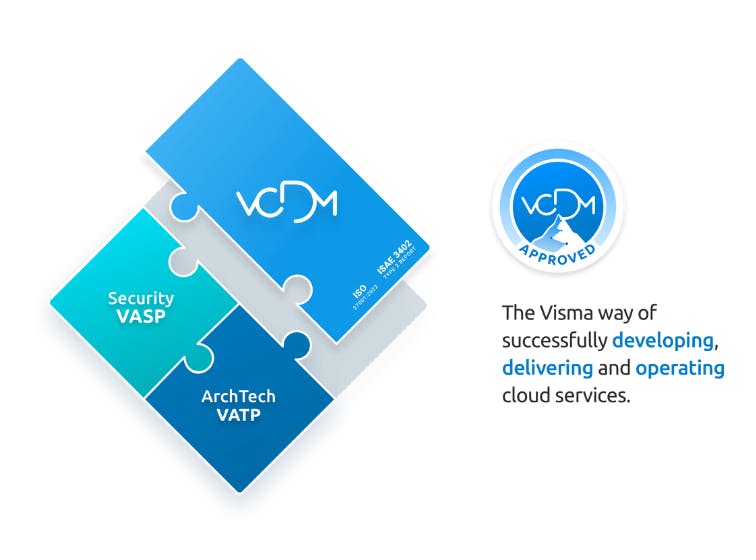Article
Business intelligence trends in 2022
5/1/2022
min read
Business insights

The Business Application Research Center (BARC) is a leading industry analyst and consulting firm for business software. In their recent survey, BARC asked almost 3,000 users, consultants and vendors about what they believe will be the most important trends for business intelligence, analytics and data management in 2022.
The result shows what trends are believed to be most prominent by a wide group of professionals within BI and analytics. Their answers provide valuable insights into the development and future of business intelligence.
Similar to last year, companies are still trying to position themselves for the future by building a solid data management foundation. Like 2020, 2021 was not a year of major hype trends. Instead, companies focused on the root causes of their challenges, such as data quality, as well as addressing the holistic establishment of a data-driven culture.
The most important BI, Data and analytics trends in 2022
Data quality and master data management have been ranked as the most important trend five years in a row. This is in line with findings from other BARC surveys, which repeatedly show that companies constantly have challenges with insufficient data quality.
Let’s dig a bit deeper into each of the ten trends:
1. Master data management/data quality
BARC points out that there is a simple reason why data quality and data management are trending in the market: The right decisions can only be based on data that is correct and up to date. One must therefore be able to trust that the data is correct to make good decisions.
The goal of master data management is to collect and share data, such as customer, supplier or product master data, across multiple systems.
You might also be interested in: Gartner’s top strategic technology trends for 2021.
2. Data-driven culture
One of the biggest changes in today’s business world is the transformation from isolated and project-oriented computer use to a broader data-driven business. In this context, data-driven means that all decisions and processes in a business are based on data.
Organisations are changing their strategy from having only a few select people accessing data and insights, to having data spread throughout the organisation so that everyone can make data-driven decisions.
Data must become part of the organisational identity. The employees must have a common goal of improving and developing the organisation and themselves through the use of data.
3. Data governance
In contrast to BI or analysis management, which is about preparing and presenting data for business management systems, data governance focuses on the actual data in these systems.
Data governance is needed as a mechanism for a data strategy that addresses how business strategy is translated into data and analysis.
Data governance is, therefore, required to implement a data strategy, and contains rules and frameworks for managing, monitoring and protecting data. This is done while taking into account people, processes and technology.
Establishing data governance is a long-term endeavour. First and foremost, it requires a clear and conscious management decision on how to work with, and use, data.
4. Data discovery and data visualisation
Data discovery is about detecting patterns and/or discrepancies in data. Data visualisation is about how to present data to the right people at the right time. This trend, therefore, focuses on making data available.
Developments in data discovery and data visualisation take place in two areas in particular. Improving user guidance and automation is at the top of the agenda for many of the vendors in this industry.
Machine learning is used to a greater extent to guide analysts and to automate tasks through all steps, from data preparation to visualisation. In addition, functions for data discovery are increasingly built into analysis and BI platforms, so that data can be easily shared with the entire organisation.
5. Self-service analytics
Self-service analytics has long been on the wish list of many companies and still has a high priority. Users require data to be available anytime, anywhere and on any device.
Businesses no longer focus solely on offering self-service opportunities. They also want to democratise data access while ensuring consistent and high-quality data and results.
6. Modernisation of data warehouses
The old data warehouse landscape has become too complex to support smooth development and is often too expensive. In addition, the implementation model is outdated, because it is not designed and optimised for the way you work with analytics today.
More companies understand the new challenges and see the potential and opportunities that come with modern data warehouses. An innovation within data warehouse technology is data warehouse automation. This saves time and streamlines work with ETL.
ETL stands for “extract, transform, load” and are three processes that together move data from databases to a data warehouse. Businesses are now beginning to see the great opportunities that exist with these methods.
7. Flexible BI development
The term “flexible” has increasingly been used in connection with business intelligence in recent years. The term is often used when talking about the development of large IT solutions. Now, it is also often used concerning the development of computer models, reports, dashboards and visualisations.
Most people who use the term ‘flexible BI’ use the term to express their expectations that older, existing BI solutions and BI organisations will more quickly support changes in business processes that balance between self-service and traditional project delivery.
Flexible BI requires the company to adopt an iterative approach to development, with a close collaboration between business and IT. Many companies are not organisationally ready for this, and some organisational structures may need to be changed.
Ideally, flexible BI development should also be supported by flexible project management that iteratively manages planning, requirements collection, and also automatic testing.
8. Alerts
Alerting is not a new function within analysis and BI, but recently the application has changed significantly. Notifications have always aimed to save time by ensuring that users’ attention is properly focused.
The older approach required that one had a clear definition of what is relevant, and therefore it has not lived up to what was promised. In recent times, alerts have been improved by moving from predefined relevance to machine-made recommendations based on usage patterns.
9. Real-time analytics
Faster data reporting and analysis is a challenge in many companies. There is a growing need to make data available in real time to support faster and fact-based operational decision making.
Real-time analytics means almost immediate processing or streaming of business information. You will then be able to capture events or other new data immediately after they occur and they will be ready for visualisation or analysis.
10. Data prep
Being able to prep your data is a very basic component for achieving good results with BI. Data prep is about the process where users clean, structure and enrich data for use in analysis. The goal of data prep is to turn raw data into valuable insights that can be used to answer specific business questions.
The constant need for data prep shows that the task is increasingly moving from IT to business users. Therefore, it is important to have a good collaboration between development resources in IT and business users.
User-friendly and intuitive tools that offer automation based on machine learning are important to get efficiency and quality in the data prep. The importance of data governance in this process cannot be overstated.
A summary of the BARC survey
The trends from BARC’s survey show that companies are ready to start managing their own data and make use of it. In addition, they show that companies are concerned with high data quality and efficient use of data.
In summary, this indicates that companies want to go beyond just collecting as much data as possible and rather be able to actively use good quality data to improve their decisions. This is also supported by the trend of modernising data warehouses.

Voice of Visma
Welcome to the Voice of Visma podcast, where we sit down with the business builders, entrepreneurs, and innovators across Visma, sharing their perspectives on how they scale companies, reshape industries, and create real customer value across markets.

















































































































































































































































